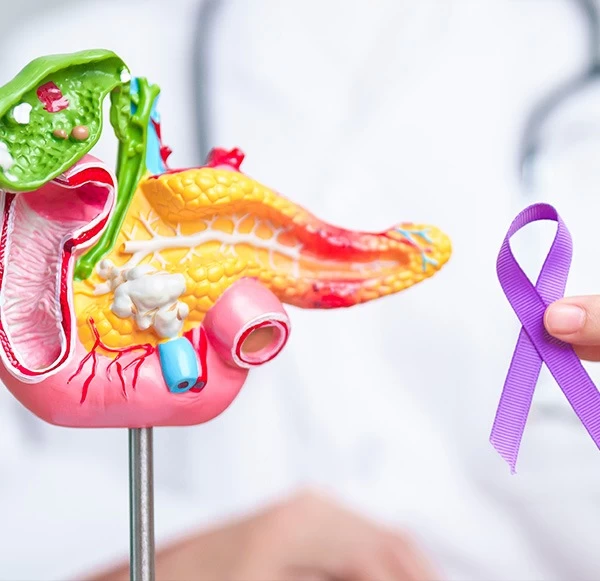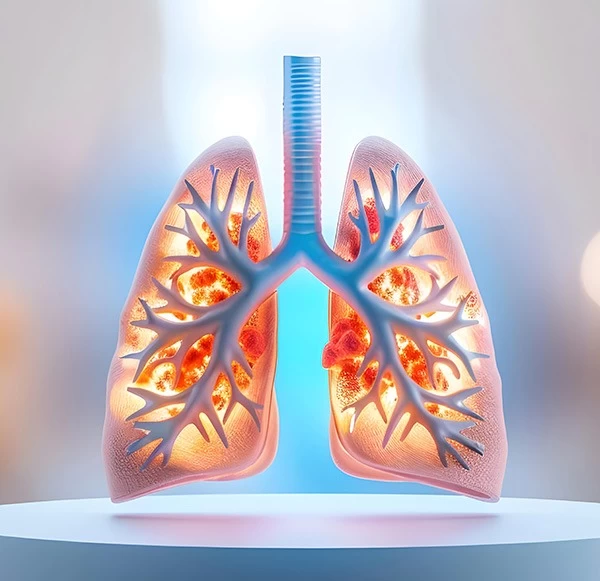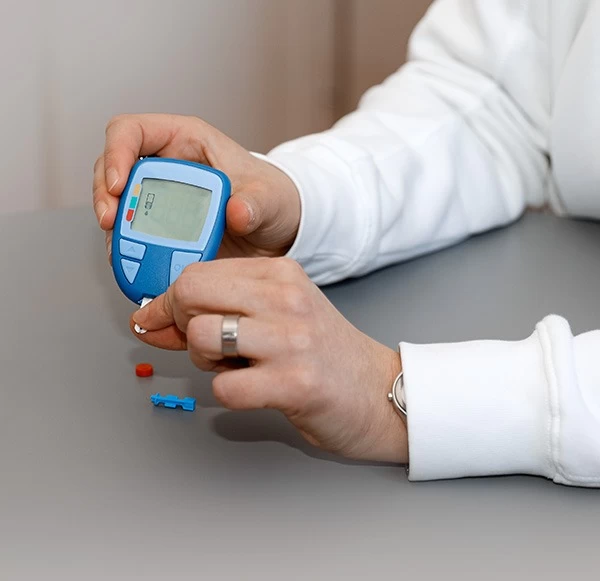- Email Us

What is
Rheumatoid Arthritis? A Complete Overview for Patients
What is Rheumatoid Arthritis?
When your joints speak louder than
your words, it might be more than just everyday aches — it could be Rheumatoid
Arthritis. RA is a chronic autoimmune disorder where the body’s defense system,
instead of guarding you, turns against the lining of your joints, leading to
pain, swelling, and stiffness that often starts in the hands, wrists, or feet.
Unlike typical joint pain, RA tends to be symmetrical and is most intense in
the morning, sometimes lasting hours. It doesn't just stop at joints — over
time, it can affect your heart, lungs, and even eyes. Diagnosing RA involves a
combination of physical exams, blood tests such as rheumatoid factor and
anti-CCP, along with imaging like X-rays or MRI, play key roles in identifying
it. While living with RA can be challenging, understanding it is the first step
toward managing it. So, let’s dive deeper into what causes RA, its symptoms,
how it’s diagnosed, and the treatment options that offer hope.
What Causes Rheumatoid Arthritis? Understanding the Risk Factors and
Triggers:
Rheumatoid arthritis can develop from a combination of
various risk factors, each playing a role in triggering the body’s immune
response. These key contributors include:
• Biological ancestry: Having a close
relative with RA increases your risk of developing the condition yourself.
• Gender: Rheumatoid
arthritis is three times more common in women than in males.
• Smoking: Smoking
exacerbates rheumatoid arthritis and raises a person's likelihood of developing
it.
• Being overweight: Being obese
increases your risk of having RA.
The Four
Stages of Rheumatoid Arthritis: How the Disease Progresses
Rheumatoid Arthritis (RA) doesn’t develop overnight — it
progresses in stages, each bringing new challenges and changes in the body.
Understanding these four stages can help patients recognize how the disease
evolves and why early treatment is important. Let’s break it down:
Stage 1:
The tissue surrounding your joint or joints is inflamed in early-stage
RA. You can experience some stiffness and joint pain. Your doctor won't notice
any harmful alterations to your bones if they conduct X-rays.
Stage 2:
Your joints' cartilage is starting to deteriorate due to the
inflammation. You may experience reduced range of motion and stiffness.
Stage 3:
Your bones are harmed by the extreme inflammation. Compared to stage 2,
you will experience even reduced range of motion, increased discomfort, and
stiffness. Physical changes might begin to manifest.
Stage 4:
Your joints continue to deteriorate during this phase, but the
inflammation ends. You'll experience excruciating pain, stiffness, edema, and
decreased movement.
It is essential to note that
not everyone experiences all four stages of Rheumatoid Arthritis, and the
progression can vary widely—sometimes unfolding over several years, other times
advancing more rapidly. The journey through these stages is unique to each
individual, influenced by factors like early diagnosis, treatment, and overall
health. Understanding this variability is crucial because timely intervention
can slow or even halt the disease’s advance, preventing severe joint damage and
improving quality of life.
Spotting the Signs: Common Symptoms of Rheumatoid Arthritis:
Rheumatoid Arthritis (RA) often begins subtly, but
recognizing its early symptoms can make a huge difference in diagnosis and
treatment. The most common symptoms can include:
· Multiple joint pain
· Stiffness, particularly after prolonged sitting or
in the morning
· The same joints on both sides of your body are
painful and stiff
· Fatigue (severe exhaustion)
· Weakness
· A fever
· Edema (fluid
retention swelling)
How Is Rheumatoid Arthritis Diagnosed? Essential Tests You Should Know:
· CBC (Complete Blood
Count) test: Red and white
blood cells, hemoglobin, and platelets are among the various blood components
that are measured by a Complete Blood Count (CBC) test. It aids in the
detection of immune-related diseases, anaemia, and infections. A CBC may show
anaemia, inflammation, or aberrant white blood cell counts in rheumatoid
arthritis (RA), all of which are signs of immune system activation. Along with
other tests, CBC results are used by doctors to evaluate the severity of
rheumatoid arthritis and track the effectiveness of treatment. It is a useful
tool in rheumatoid arthritis evaluation, even if it is not a diagnostic
technique in and of itself.
· Cyclinal Citrullinated
Peptide (CCP) antibodies test: Patients
with rheumatoid arthritis (RA) frequently have anti-CCP antibodies, which are
detected by the Cyclic Citrullinated Peptide (CCP) antibodies test. These
antibodies cause inflammation and injury by attacking healthy joint structures.
A positive CCP test helps distinguish rheumatoid arthritis from other disorders
and strongly suggests rheumatoid arthritis. Additionally, it helps forecast the
severity of the disease—patients with elevated anti-CCP levels may exhibit more
severe rheumatoid arthritis symptoms. To provide an appropriate diagnosis,
doctors employ this test in conjunction with other indicators.
· Erythrocyte Sedimentation Rate (ESR): The speed at which red blood cells settle in a blood tube is measured
by the Erythrocyte Sedimentation Rate (ESR) test. Inflammation, which is
prevalent in rheumatoid arthritis (RA), is indicated by a high ESR. ESR is used
by physicians to evaluate disease activity and track treatment response2.
Elevated ESR values are not unique to rheumatoid arthritis, but they do
indicate persistent inflammation, which helps distinguish rheumatoid arthritis
from other illnesses. For a precise diagnosis, it is frequently used in
conjunction with other testing.
· C-reactive protein (CRP) test: Blood levels of CRP, which increase in reaction to inflammation, are
measured by the C-reactive protein (CRP) test. Due to the inflammatory nature
of rheumatoid arthritis (RA), high CRP levels may be a sign of disease
activity. This test is used by doctors to gauge the severity of rheumatoid
arthritis and track the efficacy of treatment. Elevated CRP levels assist
distinguish rheumatoid arthritis from other illnesses and direct treatment
choices, even though they are not specific to rheumatoid arthritis.
· Rheumatoid Factor
test: The Rheumatoid Factor (RF) test finds antibodies
to RF, which cause rheumatoid arthritis (RA) by mistakenly attacking healthy
tissues. Although a positive RF test indicates rheumatoid arthritis, it is not
conclusive because RF can occur in other diseases. In order to confirm RA and
determine the severity of the condition, doctors utilize it in conjunction with
other tests. More aggressive rheumatoid arthritis is frequently indicated by
higher RF levels, which aid in directing therapy choices.
To check
for indications that your joints are deteriorating, your rheumatologist could
prescribe imaging studies. The ends of the bones in your joints may deteriorate
as a result of rheumatoid arthritis. Imaging examinations could consist of:
• X-rays
• Ultrasound
• MRI scans, or Magnetic Resonance Imaging
Complications
Linked to Rheumatoid Arthritis:
Living with Rheumatoid
Arthritis can increase the risk of developing additional health complications,
and in some cases, the medications used to manage RA may also lead to side
effects or other challenges.
· Anaemia
· Carpal Tunnel Syndrome
Diagnostic and Labs for Rheumatoid
Arthritis: Where Accuracy Meets Care:
Accurate and timely diagnosis is the first crucial
step in managing Rheumatoid Arthritis effectively, and that’s where a trusted
diagnostic lab like Mahajan Imaging & Labs comes in. Offering a
comprehensive range of essential tests—including blood tests like rheumatoid
factor (RF), anti-CCP antibodies, ESR, CRP test, and advanced imaging options such as X-rays and
MRI—Mahajan Imaging & Labs ensures one to get a precise diagnosis without
delay.
Known for its patient-friendly approach, the lab
prioritizes comfort, convenience, and clear communication, making every visit
smooth and stress-free. With multiple centers strategically located all over Delhi-NCR, along with home collection services. Mahajan
Imaging & Labs brings expert diagnostic services right to your neighbourhood.
Take charges of
your health with early, accurate diagnosis. Book your tests at
Mahajan Imaging & Labs today- through our official website Mahajan Imaging & Labs,
call our customer care number at +91 11 4118 3838 or chat with our WhatsApp bot at +91 88828 97661.
Conclusion:
Rheumatoid
Arthritis is more than just a medical condition — it’s a lifelong journey of
endurance, adaptation, and quiet strength. It demands patience when the body
rebels and courage when each step feels uncertain. Yet, within this challenge
lies an extraordinary resilience. Those who live with rheumatoid arthritis are
not defined by their diagnosis, but by their determination to keep moving
forward — one stretch, one step, one smile at a time. Thanks to advances in
medicine and growing awareness, life with rheumatoid arthritis can be managed,
and even thrive. Support systems, early intervention, and self-care are
powerful tools in reclaiming joy and control. Rheumatoid Arthritis may change
the rhythm of life, but it does not silence the song. With the right care,
support, and timely diagnosis, living well with Rheumatoid Arthritis is not
only possible—it’s within reach.
Frequently Asked
Questions:
Q. How to diagnose Rheumatoid Arthritis
early?
ANS. Rheumatoid arthritis can be diagnosed early by identifying chronic joint
pain, stiffness, and swelling, particularly in the morning. To identify
inflammation and joint damage before it worsens, doctors employ imaging techniques
like MRI scans and X-rays, as well as blood tests like rheumatoid factor (RF),
anti-CCP antibodies, ESR, and CRP.
Q. Is Rheumatoid Arthritis an autoimmune disease?
ANS. Certainly, autoimmune diseases include rheumatoid
arthritis. It happens when the body's own joint tissues are mistakenly attacked
by the immune system, resulting in swelling, discomfort, and inflammation. This
immune reaction has the potential to harm bones, cartilage, and other organs
over time. In order to control symptoms and avoid consequences, early diagnosis
and treatment are essential.
Q. How to cure Rheumatoid Arthritis permanently?
ANS. Rheumatoid
arthritis does not currently have a permanent cure. However, symptoms can be
effectively managed, disease development can be slowed, and quality of life can
be enhanced with early diagnosis and appropriate therapy. Medication, lifestyle
modifications, physical therapy, and, in extreme situations, surgery are all
possible forms of treatment. To prevent joint deterioration and flare-ups,
ongoing care is necessary.
Q. Is Rheumatoid Arthritis genetic?
ANS. Indeed, Rheumatoid Arthritis can have a genetic component.
Individuals with a family history of RA may have a higher risk of developing
the disease. Certain genes, like HLA-DR4, are linked to increased
susceptibility. However, genetics alone don't cause RA—environmental factors
and lifestyle choices also play significant roles in triggering it.
Q. Is Rheumatoid Arthritis hereditary?
ANS. Although it can run
in families, rheumatoid arthritis is not strictly inherited. There may be a
genetic component to the modest increase in risk if you have a close relative
with RA. However, environmental triggers, lifestyle choices, and immune system
components all play significant roles in the onset and course of RA;
inheritance alone does not define who develops it.




